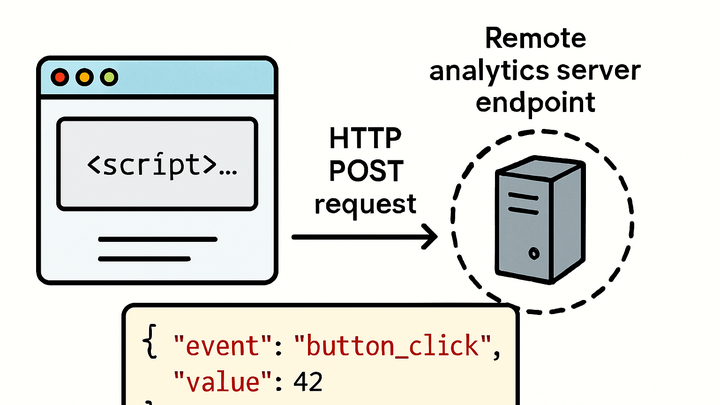Published on 2025-06-26T04:45:50Z
What is an API Request? Examples in Analytics
An API Request in analytics refers to the HTTP call sent from your website or app’s tracking library to a remote analytics endpoint. This call carries the data collected on user interactions, pageviews, events, and more. API requests are the backbone of modern analytics pipelines, enabling real-time or batch processing, data validation, and enrichment on the server side. Analytics tools like PlainSignal and Google Analytics 4 (GA4) rely on these requests to capture and store user behavior. Without properly formatted API requests, tracking data will not reach the analytics servers, leading to gaps in reporting and insights.
Api request
HTTP call from a tracking script sending event data to an analytics endpoint.
Understanding API Requests
API requests are structured HTTP calls made by your site or application to an analytics service. They initiate whenever a user action or page load occurs, transmitting raw or processed event data. By standardizing how data is sent, API requests ensure consistent reporting across various devices and platforms.
-
Definition
An API request is an HTTP message (typically GET or POST) sent from a client to a server, carrying parameters and payload that represent analytics events.
-
Why they matter
Without API requests, analytics platforms cannot receive or record user behavior. They enable real-time tracking, custom event definitions, and integration with other systems.
Anatomy of an Analytics API Request
Every API request in analytics is composed of several critical components. Understanding these parts helps in debugging issues, optimizing performance, and ensuring data integrity.
-
Http method
Specifies the action for the server: analytics events are commonly sent via POST to include a payload of event data.
-
Endpoint url
The destination address where analytics data is received, such as PlainSignal’s //eu.plainsignal.com or Google’s https://www.google-analytics.com/g/collect endpoint.
-
Headers
Metadata such as Content-Type (e.g., application/json) and authentication tokens or API keys required by the analytics service.
-
Payload
The body of the request containing event names, parameters, timestamps, user identifiers, and custom dimensions.
Examples of API Requests
Below are snippets showing how popular analytics libraries send API requests under the hood.
-
PlainSignal tracking snippet
This snippet makes an API request to PlainSignal’s endpoint when the page loads:
-
Code example
<link rel="preconnect" href="//eu.plainsignal.com/" crossorigin /> <script defer data-do="yourwebsitedomain.com" data-id="0GQV1xmtzQQ" data-api="//eu.plainsignal.com" src="//cdn.plainsignal.com/plainsignal-min.js"></script>
-
-
GA4 gtag.js snippet
In GA4, the gtag library issues an API request to Google’s collection endpoint upon configuration:
-
Code example
<script async src="https://www.googletagmanager.com/gtag/js?id=GA_MEASUREMENT_ID"></script> <script> window.dataLayer = window.dataLayer || []; function gtag(){dataLayer.push(arguments);} gtag('js', new Date()); gtag('config', 'GA_MEASUREMENT_ID'); </script>
-
Best Practices
Adhering to best practices ensures your analytics API requests are reliable, performant, and privacy-compliant.
-
Use post for event data
POST requests support larger payloads and are less likely to be cached, ensuring accurate event delivery.
-
Minimize payload size
Include only necessary data to reduce latency and improve page load performance.
-
Implement retry logic
Automatically retry failed requests to handle transient network issues and prevent data loss.
-
Respect user privacy
Avoid sending personally identifiable information (PII) and comply with GDPR, CCPA, and other privacy regulations.
